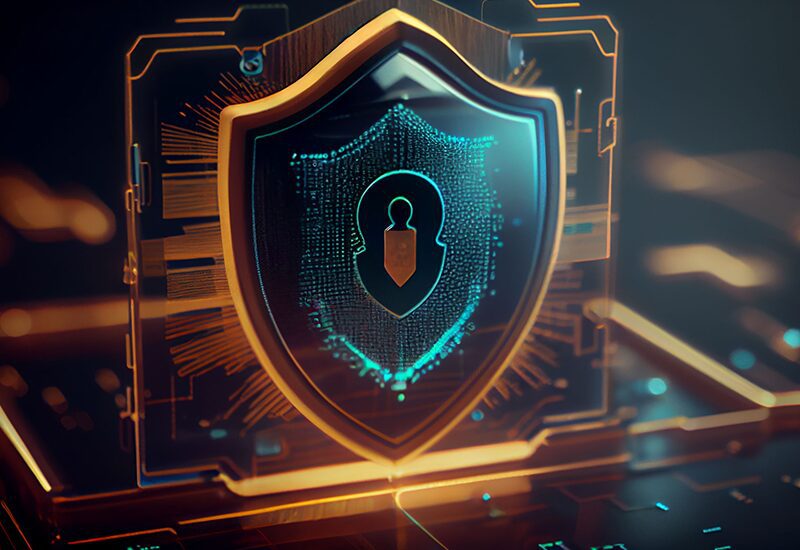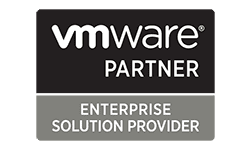What is Threat Management?
Detect and Resolve Cyberthreats With Comprehensive Threat Management and Expert Outsourcing Assistance
Editorial Team
5 Min Read

Threat management is the process of detecting cybersecurity threats, preventing attacks, responding to incidents, and developing plans to mitigate future risk. As threats continue escalating, becoming more sophisticated and persistent, businesses worldwide must be vigilant in their cybersecurity efforts. Prioritizing threat management and investing in professional services helps protect an organization and minimize risks.
Understanding Cyberthreats
As technology continues to advance, so do cyberthreats. Attacks are becoming increasingly sophisticated. Attackers are more precise in the ways they select targets, infiltrate systems, and cause damage. Companies of all sizes and industries face threats that put their customers, employees, operations, and reputations at risk.
Common attacks to be aware of include:
- Malware: Any software designed to disrupt, damage, or gain unauthorized access to a computer, server, or network is malware.
- Ransomware: A type of malware, ransomware blocks users from accessing a system or threatens to publish sensitive data unless a ransom is paid.
- Phishing: In this form of social engineering, an attacker pretends to be from a reputable organization and sends messages with the intent to deceive individuals into revealing personal information or installing malware.
- Distributed Denial of Service (DDoS): An attacker uses a DDoS attack to flood a server or network with traffic to prevent real visitors from using it.
- Insider Threats: An insider threat refers to individuals inside an organization who use their authorized access to cause harm to the organization, whether maliciously or unintentionally.
How Threat Management Works
Threat management works by following the cybersecurity framework created by the National Institute of Standards and Technology (NIST). The framework outlines five points essential to a comprehensive threat management plan.
Identify
Managing threats starts with identifying risks. Take inventory of assets and resources, including:
- Equipment
- Devices
- Software
- Data
After reviewing assets, determine which could become a target of an attack and scan for vulnerabilities within the IT infrastructure. Factor in who has access to these assets from within the organization, as well.
Protect
This threat management stage includes more physical and technical controls. These safety practices can increase security and prevent attacks. Some protection efforts include:
- Backing up data to on- and off-site locations
- Updating devices and software
- Setting permissions
- Establishing formal security policies
- Implementing information protection processes
- Maintaining hardware
- Training users
Detect
Organizations should regularly monitor systems for unauthorized access or suspicious activity. Threat management also includes investigating these instances and creating alerts to remain updated on cyberattacks.
Respond
A threat management plan should include a quick and effective response should an attack occur. Develop plans to contain the threat while keeping interested parties updated and operations running. Create procedures to notify law enforcement officials and protect other areas of the organization.
Recover
Once you’ve contained the threat, investigate it. Incorporate findings into a threat management plan to ensure future threats are quickly resolved.
Activities included in the recovery stage include:
- Repairing infrastructure
- Restoring networks
- Informing customers and employees of breaches or compromised information
- Ensuring continual operation
7 Cyberthreat Prevention Strategies
Threat management is essential to protecting an organization and lowering risk. A comprehensive management plan will involve a variety of security practices that unite employees, devices, and networks against threats. Some threat prevention strategies include:
- Implementing Strong Access Controls: Multi-factor authentication (MFA) and privilege access management (PAM) are two ways to increase security layers. They can also enhance control over who can access business technology.
- Updating Software: Regularly updating and patching software is one of the most effective ways to prevent attacks. Updates and patches usually fix vulnerabilities that attackers could exploit.
- Conducting Training: Ensuring employees receive security awareness training is essential to mitigating risks. Employees can learn more about external attacks and decrease accidental or negligent insider threats.
- Creating Network Segmentation: Segmenting networks provides more control over network traffic. It can also help prevent attacks from spreading to other essential systems.
- Using a Zero-Trust Architecture: Zero-trust security requires every individual and device to consistently verify their identity. Limiting lateral movement — how attackers move deeper into an organization’s network — also limits attacks.
- Investing in Data Protection: Secure data from attacks or quickly recover it after a loss through data protection methods. Practices include encryptions, firewalls, endpoint protection, and data backups.
- Performing Cybersecurity Audits: With consistent reviews of IT infrastructure, you can catch vulnerabilities. Audits also help ensure compliance and minimize risks.
Threat Management Services
Your organization needs cybersecurity professionals to establish comprehensive threat management — hiring and retaining these experts yourself can be challenging, though. Outsourcing cybersecurity needs can save time, money, and effort. Hiring a third party can also give your organization the thorough threat management and cybersecurity practices it requires.
Benefits of Outsourcing Cyberthreat Management
Outsourcing threat management to a professional cybersecurity company brings benefits such as:
- Reduced Risk: Cybersecurity experts can detect and resolve threats quickly, helping decrease the risks of an attack or loss.
- Saved Time and Money: Working with a professional company saves your organization the time and expense of hiring, retaining, and training an entire cybersecurity team.
- Improved Efficiency: Cybersecurity professionals bring expertise, experience, qualifications, and certifications that enable them to handle various threats accurately and quickly so your organization can enjoy operational efficiency.
- Increased Compliance: Dedicated cybersecurity professionals thoroughly understand security standards and regulatory compliance, helping ensure your organization is compliant and secure.
Factors to Consider When Choosing a Managed Cyberthreat Service Provider
Your organization faces an evolving threat landscape — a trustworthy provider can keep up with escalating threats and your security needs.
When searching for a provider, choose one that:
- Employs the best talent and emphasizes continued learning
- Offers scalable services
- Excels in technical capability
- Focuses on customer satisfaction
- Possesses extensive experience and expertise
Choose IT Solutions From GDC
GDC has taken a customer-centric approach to all our IT solutions since 1995. Trust our professional team will work to understand your threat landscape and deliver comprehensive security threat management services that meet your needs. Contact us to learn more about our threat management capabilities.




